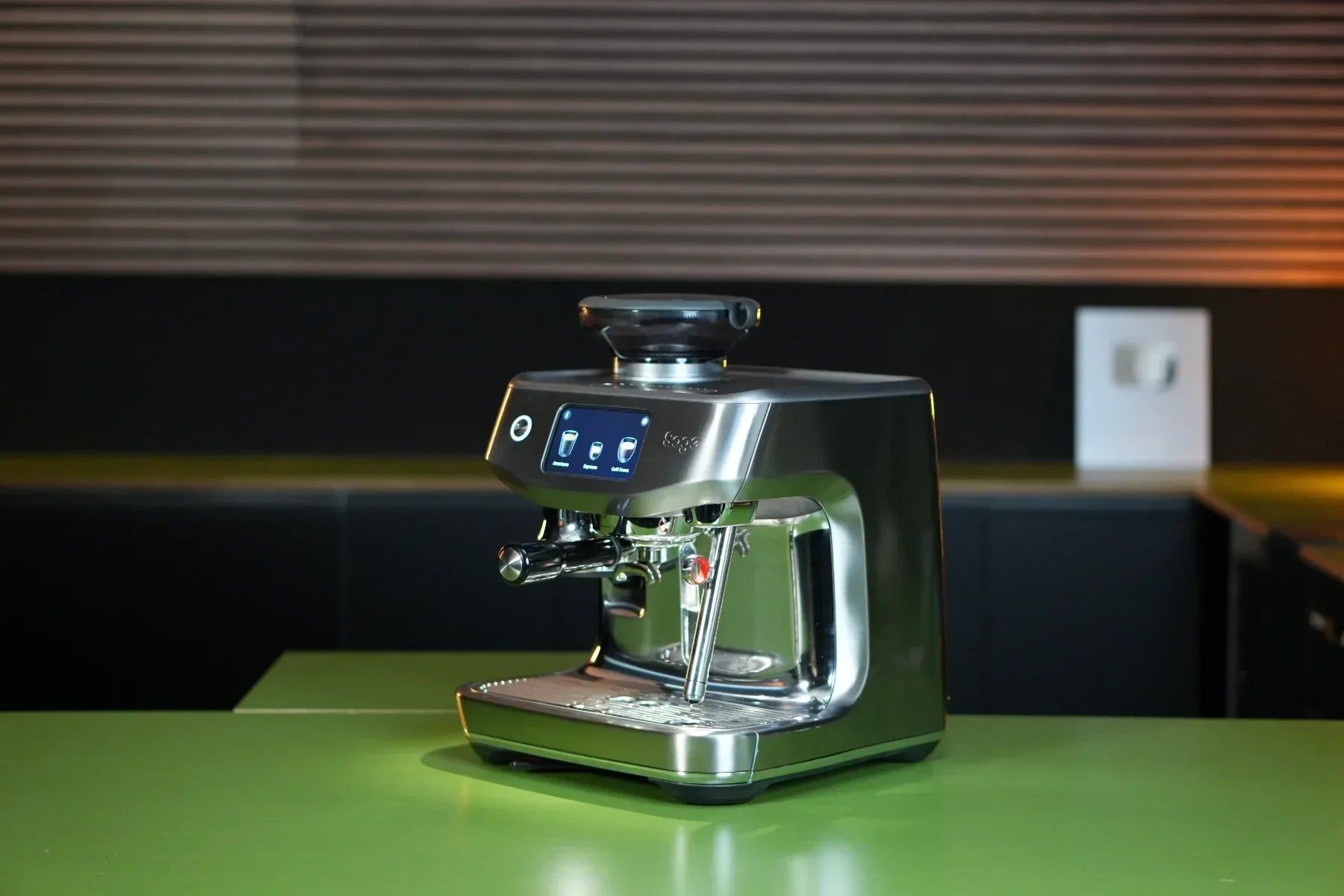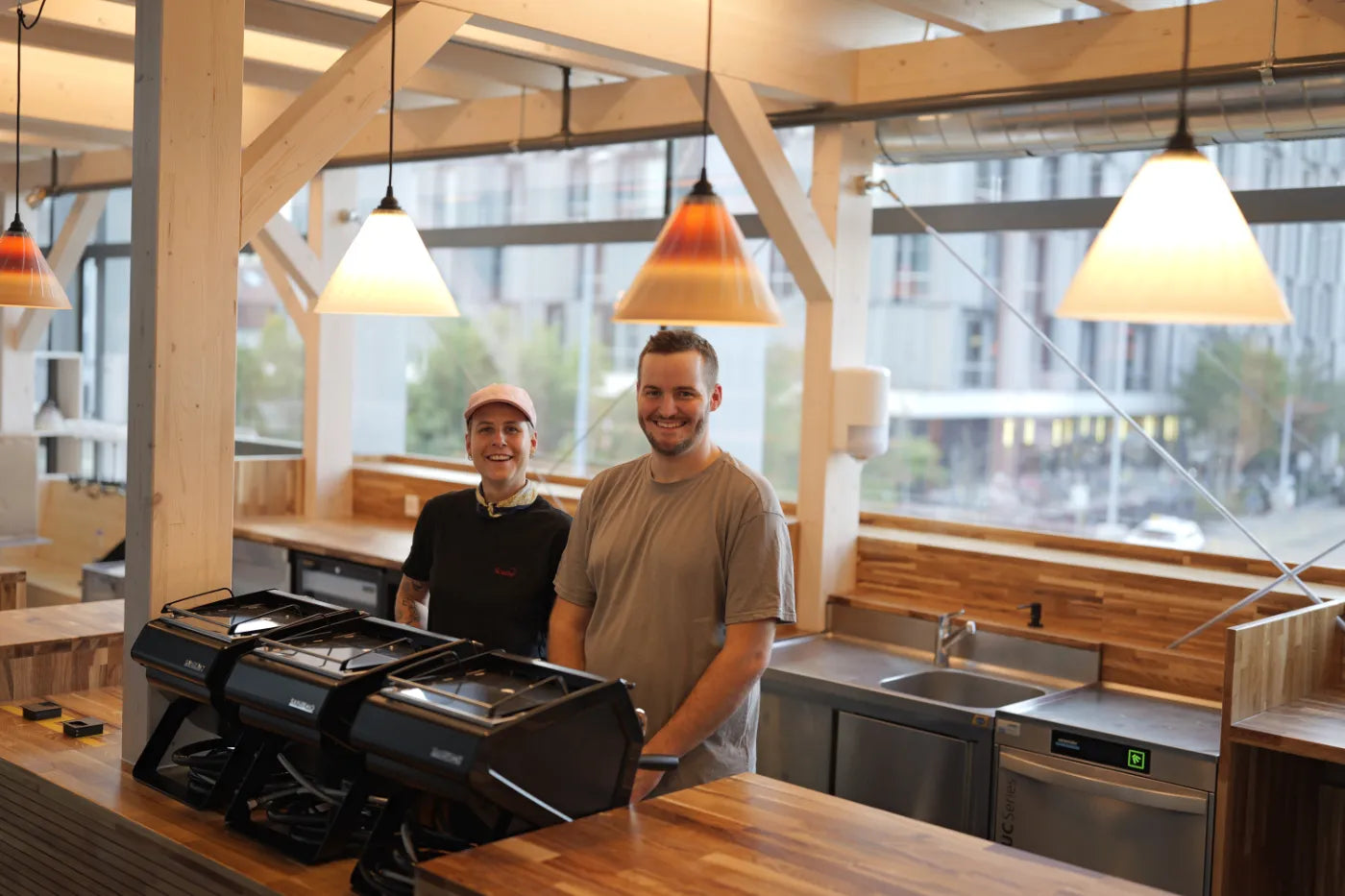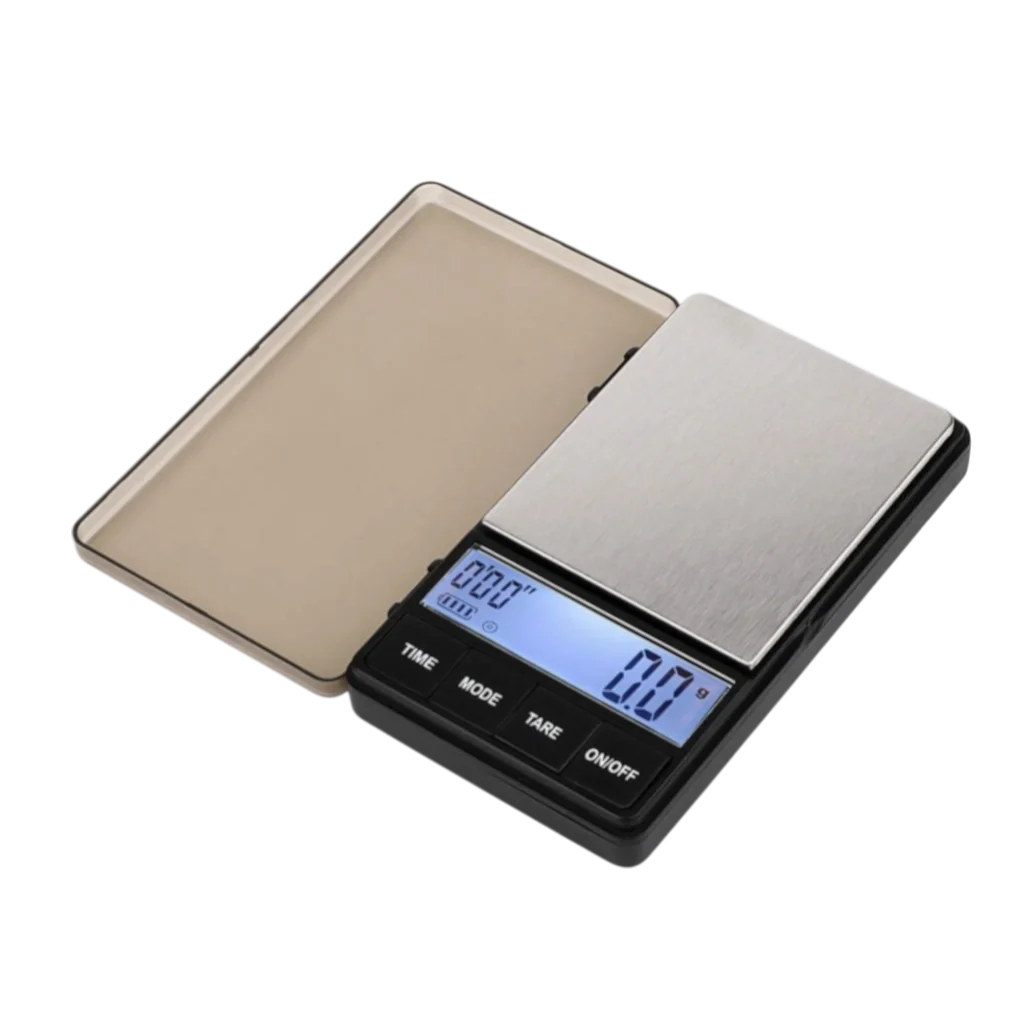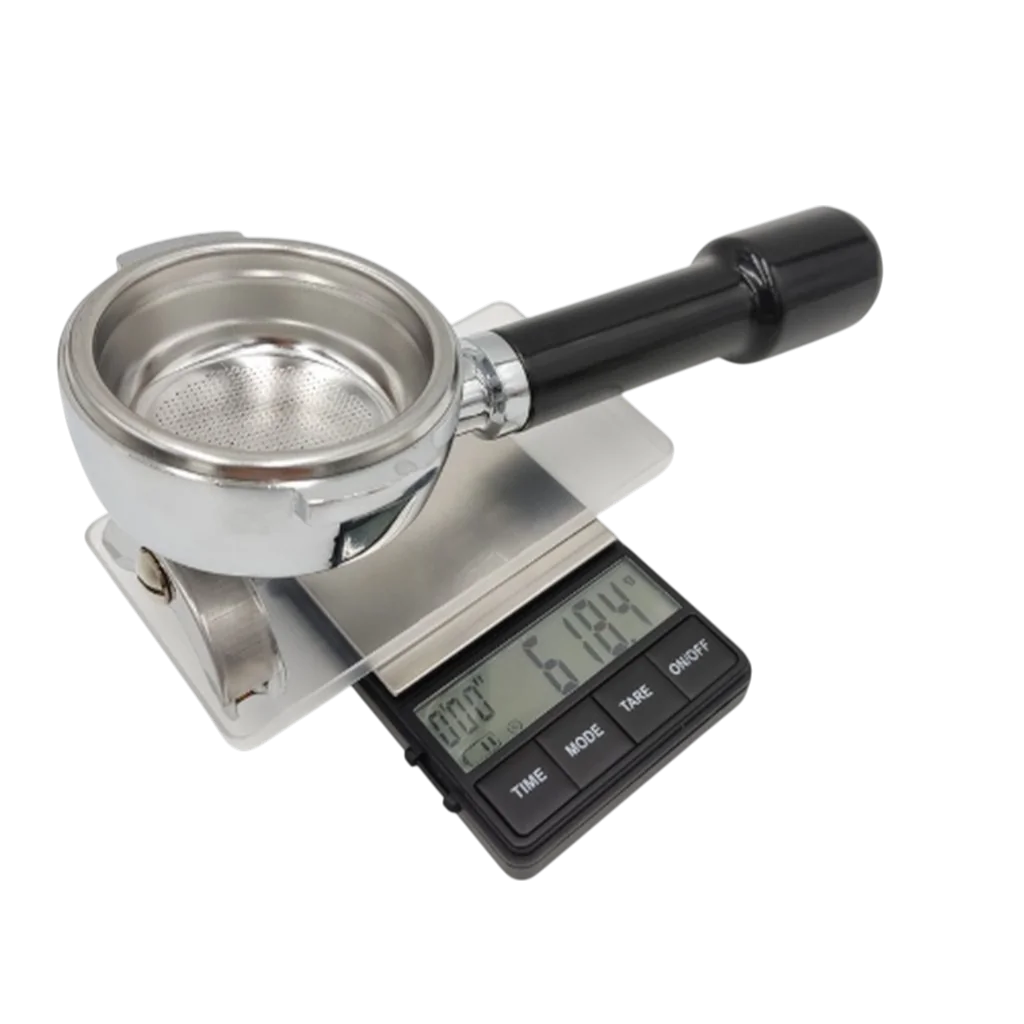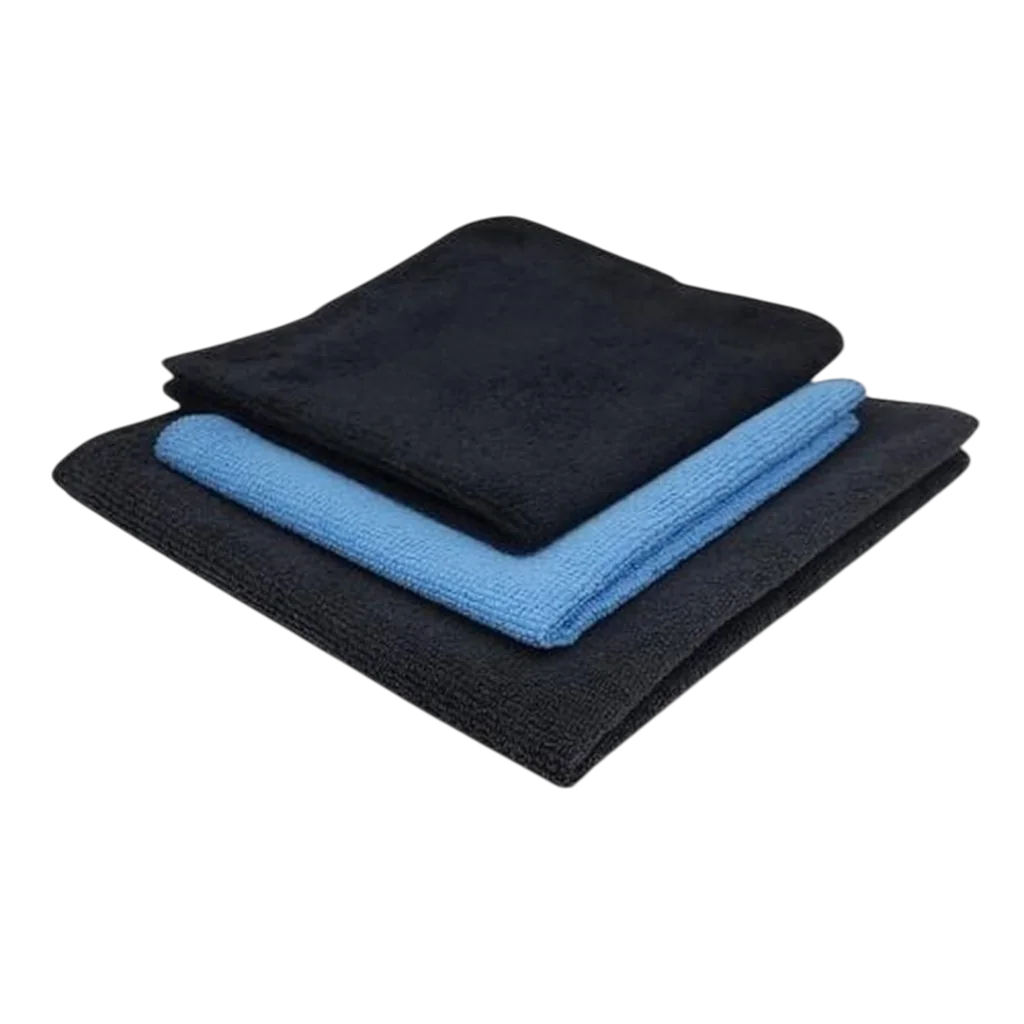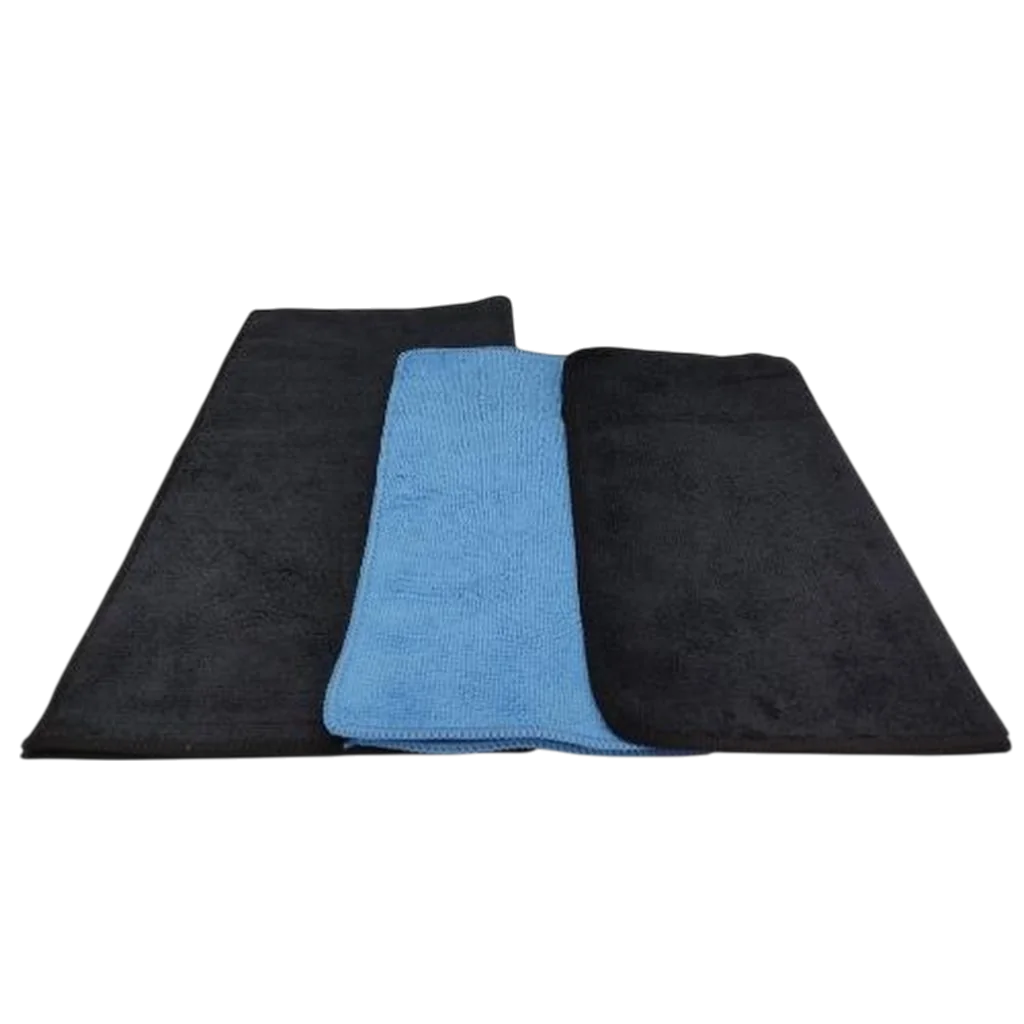The La Marzocco GS3 AV is considered by many to be one of the best espresso machines for the home—and "the GS3," as it's affectionately known in professional circles. We, as testers, were also intrigued: Michel had a GS3 model in his kitchen for many years, and I use a GS3 AV for coffee catering on our coffee bike. We tested the machine both in everyday use at home and under the tough conditions of real-life events. Let's start with this: In many ways, the GS3 lives up to its legendary reputation, but it doesn't completely convince. In the following review, we examine the strengths and weaknesses of the GS3 AV and take a closer look at who this machine is truly suited for.
Buy La Marzocco GS/3 AV
The following specialist shops sell the La Marzocco GS/3 AV, and we recommend purchasing a machine from them. They all offer offset adjustment.
Germany: [Affiliate links] Stoll Espresso
Switzerland: [Affiliate links] deon
We're looking for specialist partners for you who we know offer good work and excellent service. We maintain close contact with the dealers. These are commission links. If you order through these links, it won't cost you any extra, but we receive a small commission, which we invest in new test equipment. We're still working on it and are looking for competent partners for you in the DACH region.
Processing and value
The GS3 AV's craftsmanship leaves little to be desired. La Marzocco consistently relied on professional components in its construction—the very same components used in their commercial machines like the GB5 or Strada. Compromises? No compromises. The result is a single-group espresso machine that feels more like a full-fledged commercial machine. The frame and chassis are predominantly made of solid stainless steel, which you can not only see but also feel: The GS3 weighs in at around 33 kg (71 lbs)—immediately demonstrating that quality sometimes comes with weight.
Inside, you'll find professional-grade technology: two generously sized stainless steel boilers (1.5-liter brewing boiler, 3.5-liter steam boiler) and a saturated brewing group for optimal temperature stability. This dual-boiler configuration is directly derived from its big sister, the Strada, and ensures consistent temperatures and abundant steam power. The casing feels robust and durable. The only minor drawback to the quality are the side panels: These are made of black plastic as standard. Given the price, we would have preferred solid metal – although La Marzocco even offers stylish glass sides or wooden panels as options. Regardless, the fundamental quality of the GS3 is hard to shake. Everything feels solid and high-quality, from the smooth valves to the thick stainless steel drip tray with a plastic inlay. This machine is clearly built to last for decades and produce thousands of espressos.

Side view of the La Marzocco GS3 AV.
Usability and new IoT control
The usability of the GS3 AV is a double-edged sword. On the one hand, it offers the experienced barista numerous setting options: The digital display allows for convenient configuration of the brewing temperature (PID-controlled) and extraction volume, and a shot timer helps with extraction control. The AV (Auto-Volumetric) version allows for precise programming of the desired amount of water per shot – then, at the touch of a button, the same reproducible amount of espresso is delivered every time. This volumetric dose control is invaluable when frothing milk in parallel or preparing several drinks in succession. In hectic catering operations, we enjoyed the automatic function, which allowed us to briefly devote ourselves to other tasks while the GS3 automatically pauses the extraction.
On the other hand, you can tell that the GS3's concept dates back to the 2000s. The menu navigation on the small display is functional, but somewhat old-fashioned. Those used to modern touchscreens will initially scroll through convoluted menus – intuitiveness is something else entirely. On the other hand, the machine responds promptly to inputs and changes, and thanks to PID, the temperature can be adjusted in fine increments. A new addition (and one we tried out, of course) is IoT control via the La Marzocco app. The GS3 can now be controlled remotely via Wi-Fi and a smartphone – for example, programming timers for switching on and off. We took advantage of this immediately: being able to turn on the machine from bed early in the morning is a luxury you quickly learn to appreciate. This way, the GS3 is preheated when you shuffle sleepily into the kitchen – saving you the wait. Temperature settings or brewing parameters can also be conveniently changed via the app. However, it must be stated clearly: This new IoT gadget only slightly improves usability and doesn't significantly change the basic concept of the machine. Despite the app, the GS3 remains not a high-tech gadget, but a working tool. Those who were previously comfortable with the menu navigation will appreciate the app as a nice add-on; however, those who generally find the machine a bit sluggish to use won't be converted to a fanboy by IoT. At least: Programming and preheating via the app somewhat mitigates one of the biggest criticisms – the long heat-up time.

Heating time and power consumption
Let's get to the real disadvantages of the GS3 AV: energy consumption and heat-up time. This is where the machine's professional heritage shows its downside. In our test, our GS3 needed around 30 minutes to fully reach temperature (brewing group, both boilers, and casing heated up). La Marzocco officially advertises a heat-up time of around 15 minutes, but this is probably very optimistic - perhaps it refers to the time it takes to reach the boiler's target temperature. In practice, it takes about twice as long for the temperature in the saturated brewing group to stabilize and the machine to be truly shot-ready . Half an hour of warm-up feels like an eternity in the everyday life of a home barista, especially since many more modern machines (e.g. thick-film heaters or lighter dual boilers) are ready to go much faster. This is where you pay the price for the massive metal components and the large boilers. If you want a spontaneous espresso in the morning, you have to plan ahead - or just leave the GS3 running all the time.

The latter isn't ideal advice, however, as the GS3 AV had the highest power consumption of all single-group espresso machines tested so far . It uses 0.6 kWh to heat up and brew five double shots, which is roughly six times that of a smaller thermoblock machine like the Ascaso Steel Duo PID. Even when idling, it draws a continuous supply of power to keep the 1.5 liters of brewing water and 3.5 liters of steaming water hot. This makes the GS3 a true power user – it uses what it needs without eyeing the electricity bill. At least there's a programmable Eco mode or Half Power mode, which, for example, only heats one boiler or reduces power. But even this is only of limited help in everyday life: you either accept the increased consumption or consistently switch the machine off after use and use a timer/IoT to preheat it in good time. We took a middle path—planning and preheating—because leaving the GS3 running all day would be an expensive proposition at today's electricity prices. This thirst is reflected in our rating: Heat-up time and power consumption are among the weakest points (30 minutes ~ 3.5/10; very high consumption ~ 2/10).

Graphic from 2021
Temperature stability in espresso operation
Let's turn our attention to more pleasing aspects: the temperature stability and espresso potential of the GS3. Thanks to its saturated brewing group design and PID control, the GS3 maintains an impressively constant brewing temperature – especially over many extractions. In our endurance test, we extracted 30 espressos every minute. The result: no significant fluctuations in performance; the temperature rose by a maximum of 1°C across all extractions. The 1.5-liter brewing boiler doesn't buckle even under constant pressure. In short: the GS3 is a workhorse that delivers a virtually consistent temperature even during continuous use. In quantitative measurements according to the WBC protocol, the temperature fluctuation was a tiny 0.61°C , and according to our KM protocol, it was an equally excellent 0.84°C directly after heating up. These are values that we classify as "very good." This puts the GS3 in the top league of espresso machines in terms of temperature consistency.
But, and here comes the critical barista's perspective: Within a single extraction, the GS3 shows a slight tendency toward temperature-related "drift." We could confirm what we'd heard before – during an espresso extraction, the water temperature in the extraction rises slightly, by up to about 1°C from the first to the last drop. Now, to be fair: 1–1.5°C is no big deal in everyday life – most coffee drinkers won't notice it. We mention it for the perfectionists and tech nerds who want to have every aspect under control. The bottom line is: for consecutive extractions, the GS3 is unbeatably stable; only those who scientifically dissect each shot individually will discover this minimal increase.
In the espresso cup, the GS3 AV delivers what you'd expect from a machine of this class: perfectly extracted shots with rich aroma and finely nuanced flavor profiles. The combination of consistent brewing temperature, the powerful 9-bar pressure of the internal rotary pump, and volumetric precision ensures reproducible, café-quality results.
Every espresso we made with the GS3 was at least very good, many excellent. Crema, texture, sweetness—everything was there, as long as the beans and grinder cooperated.
So why only 9 out of 15 points for espresso potential? Well, the GS3 AV doesn't earn the final points for absolute espresso perfection because there are still machines with additional refinements. For example, the GS3 MP (Manual Paddle) or other high-end machines with pressure profiling offer the option of manually controlling the pressure curve and pre-infusion. This allows a few more percent of extraction to be squeezed out of some coffees, which isn't possible with the purely volumetric GS3 AV with its smooth 9-bar profile. Furthermore, the aforementioned slight temperature increase remains a minor flaw. Don't get us wrong – the GS3 AV makes fantastic espresso, and in 99% of cases, the limiting factor is the person operating the portafilter, not the machine. But to achieve the full 15 points, it still lacks that very final touch compared to the truly uncompromising "espresso labs." The GS 3 AV, with its 9-bar profile, is the benchmark for almost all things when it comes to constant dispensing. However, in terms of flexibility, it can't compete with profile-controlled machines.
Steam unit and milk frothing
When it comes to frothing milk , the GS3 AV shows what it's capable of with its enormous steam boiler. The steam boiler holds a whopping 3.5 liters – a capacity unmatched by any other single-circuit machine. In practice, this means endless steam, powerful and dry. The GS3 blows steam so powerfully through the four-hole steam nozzle that it's a joy to use. We were truly amazed at how quickly even larger 0.6-liter jugs of milk are brought up to temperature and into the finest microfoam texture – namely in 19 seconds. Frothing a 300-ml jug of milk? The GS3 does it in a few seconds, and there's probably still room for improvement. This steam power is absolutely "on a restaurant level" – frothing large quantities of milk in succession is a breeze for this machine. When used at home, you have to be more careful: those coming from a smaller machine will be surprised by the power of the steam. This requires practice or reducing the pressure to avoid accidentally overheating or over-frothing the milk, as the GS3 is mercilessly efficient. Once you get the hang of it, the GS3 conjures up dreamy, barista-quality milk foam: velvety, fine-pored, and beautifully glossy, perfect for latte art.
A nice bonus is the high-quality workmanship of the steam wand itself. It's made of stainless steel, is fully movable (swivels 360°), and insulated as a " no-burn" lance . This means you can safely touch it even after dispensing steam without burning your fingers – a blessing for clumsy people like me who like to clean the machine while frothing and inadvertently touch the lance. Of course, the GS3 also has a hot water outlet, which uses a mixing valve to mix hot boiler water with a little fresh water. This way, for example, you get a slightly cooler 90°C for tea or an Americano, instead of boiling water, which works very well in practice. Details like these show that the GS3 is thoughtful and wants to offer the user convenience.
Overall, we give it 8/10 points for foam quality . The steam unit's performance is unparalleled. So why not 10/10? Because in 2025, we've arrived in an era of automatic steam wands that, with temperature probes in the tip, independently produce excellent milk foam quality. They're less powerful and usually slow down, but for many home baristas, they're still an exciting additional option. We also rate the strength and power of the GS3 AV's steam delivery in the categories of gastronomy, volume, and catering performance.
Volume potential and catering suitability
Now we come to the core topic of the GS3 AV: its intended use. We already hinted in the title that this machine's greatest strengths lie outside the usual home barista routine. The GS3 wasn't originally designed as a classic household machine, but rather as a compact restaurant or catering machine. All components, volumes, and performance specifications are engineered to produce numerous espressos in a row with consistent quality. And that's exactly what it does – almost unerringly. Our own GS3, which we use for events, is the best example: For almost eight years, we've been sending it to trade fairs, weddings, and street festivals. There, it has to easily produce 300–400 espressos a day – and it still does it as reliably as it did on the first day. That's a tough job, and yet the machine shows no significant signs of aging. We haven't noticed any noticeable drops in performance, nor have we had to carry out any major repairs. And if a component does fail, it can be quickly replaced thanks to its modular design – the GS3 is built to last forever.
We award this volume and catering potential 10/10 points . In practice, this means: The GS3 is ideal for a small coffee truck, a coffee bar at a weekly market, or as a second machine in a small roastery. It can be operated with mains water (or via the internal 2.5 L tank, if necessary) and, thanks to the rotary pump, can also be connected to a drain – a real relief in continuous operation, as you don't have to worry about the water tank and drip tray. The temperature remains stable over dozens of brews, and the steam supply seems inexhaustible. We can prepare so many drinks in such a short time with a GS3 that we run out of steam before the machine does. In our mobile coffee shop, it has shown many an amazed guest what a single brewing group can achieve when it comes from La Marzocco.
However, all these hymns of praise have one crucial catch: very few people will ever need this potential at home . In the context of the home barista, the GS3 AV is simply oversized. Anyone who makes two espressos in the morning and maybe a cappuccino in the afternoon is only scratching the surface of what this machine was built for. The GS3's greatest weakness therefore actually lies in a misallocation: It can do an incredible amount – more than a home user ever needs – and has to accept compromises (power consumption, heat-up time, price). You pay a high price for capabilities that you rarely use in everyday life. That's precisely why our conclusion is nuanced: For ambitious home baristas with a large budget and professional standards, the GS3 AV can certainly be a dream. It's fun to use such a precision tool, and you can feel the reserve and stability that lies dormant in the machine with every shot. But from a purely rational perspective, it's often "too much" for pure home use.
Accessories and scope of delivery
A quick look at the topic of accessories : La Marzocco is unfortunately stingy here – and this influences our rating (3/10 points). Given the purchase price of 6,900 francs or 7,600 euros for the GS3 AV, we would have expected a somewhat more extensive or higher-quality accessory package. The box contains only the essentials: a double and a single-flow portafilter, four portafilter inserts (7 g, 14 g, 17 g, 21 g), a blind sieve for backflushing, a simple stainless steel tamper , cleaning powder, a water hardness test kit, and a mains water connection kit. Don't get us wrong – it's solid and doesn't leave any essential components out. But "premium" feels different. For example, you'll look in vain for a bottomless portafilter, which other manufacturers often include in this price range. The included tamper, although made of metal, is rather simple and no comparison to the sophisticated precision tampers used by many home baristas these days. No milk jug, no knock-off box, no other gimmicks – La Marzocco could have been a bit more generous here to offer the buyer a worry-free package. So, you still have to purchase a few extras to complete the setup.
Conclusion: Who benefits from the GS3 AV?
The La Marzocco GS3 AV is without question an exceptional machine . In our real-world testing, it impressively demonstrated its capabilities: first-class espresso quality, incredible performance over long brewing runs, robust construction, and professional-level steam output. As a home barista, the GS3 makes you feel almost like a small café owner—you can, if you want, serve an entire group of cappuccinos in a short time without the machine batting an eyelid. This machine exudes a comforting feeling of unshakable stability and reserve. This is also in keeping with its charming retro design with modern inner qualities, which is sure to enhance many a kitchen interior (assuming there's enough space for the massive machine).
At the same time, it must be soberly acknowledged that the GS3 AV is only truly useful for home use in very specific circumstances. The machine's greatest advantages – its high throughput and long-term durability – are hardly evident in normal household use. Instead, you have to manage the aforementioned disadvantages: you need patience when heating up, accept very high power consumption, and invest a huge amount of money. Our price-performance ratio for home use is accordingly drastic: we award it just 1.2/10 points . In other words: you're paying primarily for the brand name and the professional features, rather than for the fact that your own espresso would be better than with a machine half the price. If you're purely looking for espresso quality for a few shots per day, you'll be almost on par with significantly cheaper machines – simply because the GS3 can't flex its muscles due to a lack of opportunities.
However, there is one niche where the GS3 AV excels: semi-professional applications . For passionate hobby baristas who regularly serve larger groups of coffee (keyword: the whole family and neighborhood on weekends), or for businesses with limited space (e.g., delicatessens, bars, or mobile coffee stands), the GS3 is a fantastic solution. It combines the performance of a commercial espresso machine with the size and handling of a household machine. In this context, the investment pays for itself much more quickly – we ourselves have seen our GS3 pay for itself within a year through revenue from catering events. And the lifespan of a GS3 is measured in decades, not years.
Our tip: Think carefully about your “ coffee type .” If your heart races at the thought of savoring every facet of espresso preparation with a genuine La Marzocco, and if the weaknesses mentioned above are of secondary importance to you, then you will be very happy with the GS3 AV. It demands a lot from you (power, space, money, and commitment), but it also gives you an incredible amount in return. Using it every day simply feels professional – and that has its own appeal. If, on the other hand, you are primarily interested in results with reasonable effort and perhaps only drink a few cups a day, then the GS3 can even be a bit frustrating because its potential is untapped and it seems rather cumbersome in everyday use. In that case, you are probably better off with a smaller dual boiler machine or a good dual-circuit machine.
Summary of the La Marzocco GS3 AV rating: (Tested in 2025)
- Rating: 8/10
- Accessories: 3/10
- Usability: 5.5/10 (without IoT)
- Volumetric (automatic dosing): 9/10
- Temperature stability: very good (WBC protocol: 0.61 °C; KM protocol: 0.84 °C)
- Heating time: approx. 30 min. (3.5/10)
- Power consumption: very high (2/10)
- Foam quality: 8/10
- Espresso potential: 9/15
- Volume: 3/5 (~60 dB)
- Price-performance ratio: 1.2/10
- Volume/Catering Potential: 10/10
